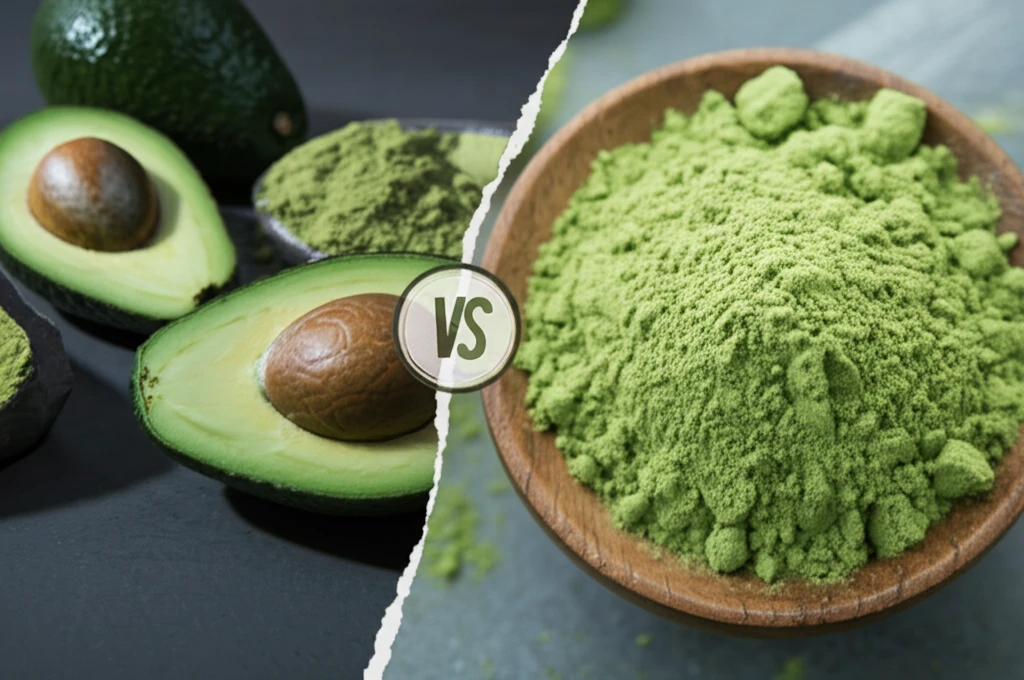
The Great Avocado Debate: Freeze-Dried vs. Fresh – Which is Best for You?
"Uncover the surprising impact of freeze-drying on avocado's nutritional profile and how it stacks up against fresh avocados for health-conscious consumers."
Avocados have surged in popularity, celebrated for their creamy texture, versatility, and impressive nutritional benefits. From toast toppings to smoothie boosters, this fruit has become a staple in modern diets. With increasing demand, innovative preservation methods like freeze-drying have emerged to extend shelf life and maintain quality. But does freeze-drying compromise the nutritional integrity of this beloved superfood?
Freeze-drying, also known as lyophilization, is a dehydration process that works by freezing the material and then reducing the surrounding pressure to allow the frozen water to sublimate directly from the solid phase to the gas phase. This method is prized for its ability to preserve the original characteristics of the product, including taste, aroma, and nutritional content, better than many other drying techniques. However, the impact of freeze-drying on the specific nutritional components of avocados has been a subject of interest and investigation.
A recent study published in the journal Revista Chilena de Nutrición sought to determine whether freeze-drying and different production conditions (rain-fed versus irrigation) affect the chemical composition and fatty acid profile of avocado pulp. This research provides valuable insights for consumers and food producers alike, helping to clarify whether freeze-dried avocados can truly measure up to their fresh counterparts in terms of nutritional value.
Freeze-Drying vs. Fresh: Unpacking the Nutritional Differences

The study meticulously examined four different treatments of avocado pulp: non-freeze-dried rain-fed fruits, non-freeze-dried irrigation fruits, freeze-dried rain-fed fruits, and freeze-dried irrigation fruits. The researchers analyzed various components, including total fat, protein, ash, crude fiber, and the fatty acid profile, which included oleic, palmitic, linoleic, and palmitoleic acids. Their findings revealed some interesting distinctions between freeze-dried and fresh avocados.
- Linoleic Acid Reduction: A slight decrease in this essential omega-6 fatty acid.
- Ash Content Variation: Freeze-drying in rain-fed conditions increased ash content.
- Fatty Acid Stability: Overall, freeze-drying maintains most of the beneficial fatty acids.
- Nutritional Preservation: Generally, freeze-drying preserves the nutritional quality of avocado pulp.
Making Informed Choices: Fresh vs. Freeze-Dried Avocado
Ultimately, the choice between fresh and freeze-dried avocado depends on individual priorities and needs. Fresh avocados provide the most complete and unaltered nutritional profile, but they come with the challenge of a short shelf life. Freeze-dried avocados offer convenience and extended shelf life, making them a practical option for those who want to enjoy avocados without the risk of spoilage. While there are minor nutritional differences, freeze-dried avocados still retain a significant portion of their beneficial nutrients, making them a reasonable alternative. By understanding these nuances, consumers can make informed decisions that align with their health goals and lifestyle.
